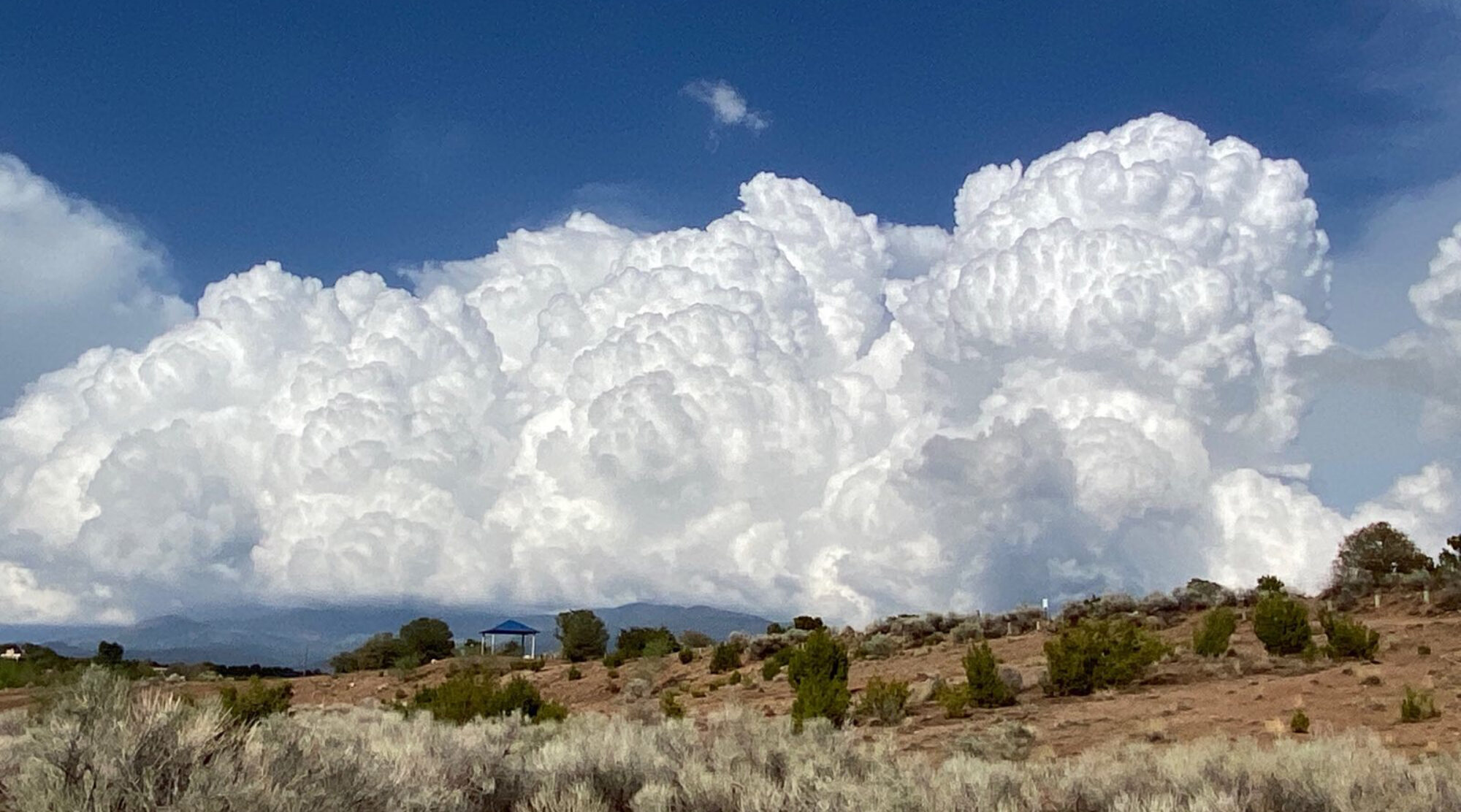Public Art | Bert Benally and Ai Weiwei: Part I – Shí kéyah (My country)
This the first part of a report on the collaboration between Navajo artist Bert Benally and Chinese artist Ai Weiwei as part of TIME (Temporary Installations Made for the Environment), a program of New Mexico Arts. You can read part two here. In this case the performance on the night of June 28, 2014 was not the public part of the event. It was witnessed by a small group that included CFile Chief Editor Garth Clark. The public program is an exhibition at the Museum of Contemporary Native Arts (Santa Fe, July 16-October 15, 2014) of the 3D modeled digital landscape created by xRez Studio of Pull of the Moon, which shows a fly-over view of Coyote Canyon featuring Benally and Ai’s art installations. Also, there was the showing of a film produced by xRez (nothing to with reservations) in a 50-foot diameter dome screen at Museum Hill in Santa Fe on July 18th and the 19th. You can read the interview with Ai Weiwei and Garth Clark here.
What follows is a description of the project from Bert Benally:

The total area of the piece is 40 feet in diameter, with a centerpiece that is 15 feet high with a 6-foot diameter. The centerpiece is a Navajo-style utilitarian clay pot, that was plastered onto a wooden frame weaved from saplings. A corn sculpture welded from metal and bicycle parts was placed inside the pot and was revealed when the clay pot burned and crumbled.
The area surrounding the clay pot was divided into four quadrants in correlation with the four directions. There were two lines separating the four quadrants, made from painted 4-inch PVC pipe cut in half and filled with water. The four quadrants have images made from lines which are on fire. On the outside perimeter of the circle there are four smaller circles, each with a fire in the middle and a design made with shadows.

The pot that burns and crumbles follows the lead of Ai Weiwei’s artistic protest of breaking historically significant pots in his own country. In this instance, the pot represents the general stereotypes and misunderstandings of the outside world’s view of the Navajo people. The pot crumbling and revealing the corn sculpture is the breaking down of those views and showing the world the beauty of the Navajo philosophy, culture, language and people.
The corn sculpture, which remains after the pot has burned down and crumbled away, symbolizes the Navajo both culturally and spiritually. The colored lines made from PVC pipe filled with water represent rainbows. They are painted red and blue. For Navajos rainbows represent protection and also beauty.

Again using Ai Weiwei’s image as a source, four images were developed using what I see as his idea of people as industry. In this piece the industry was a traditional one, the industry of rug weaving and silver-smithing. Using the Navajo philosophy of the four directions, images were developed for the quadrants and for the outlying circles. Two of the quadrants have designs that came from rug-weaving traditions and the circles on the perimeter came from silver-smithing stamps. In the quadrants, the east has a rug design that came from the eyedazzler era and it has a complex, geometric pattern. The south quadrant had a bear and a mountain, images which were derived from the stories told to me by the local residents about the origin of their clan, “Tsinajinnie.” The west had another rug design from chief blankets. The last quadrant, the north, had another design derived from the origin stories of the “Tsinajinnie Clan;” it was of a thick forest. The four circles on the outer perimeter had shadow designs of old silversmithing stamps, of the early days of silver work by the Navajo.
All the materials used for the artwork were collected right from the canyon. Particular attention was paid to artistic traditions of the Navajo as well, such as sand painting, weaving, silver smithing and clay pottery. Each tradition was reinterpreted and used in a more contemporary fashion. The piece was made with a Navajo audience in mind and contained many elements that were only perceivable by a person with knowledge of Navajo history and culture. The piece was accompanied by a collage of sound made from samples and loops of indigenous cultures from throughout the world mixed with traditional sounds and music of the Navajo.
Bert Benally is an art teacher, installation, sound and music artist living in the Navajo Nation.
Featured image: Bert Benally, Pull of the Moon, 2014. Part of the Pull of the Moon performance with Ai Weiwei.
Any thoughts about this post? Share yours in the comment box below.



